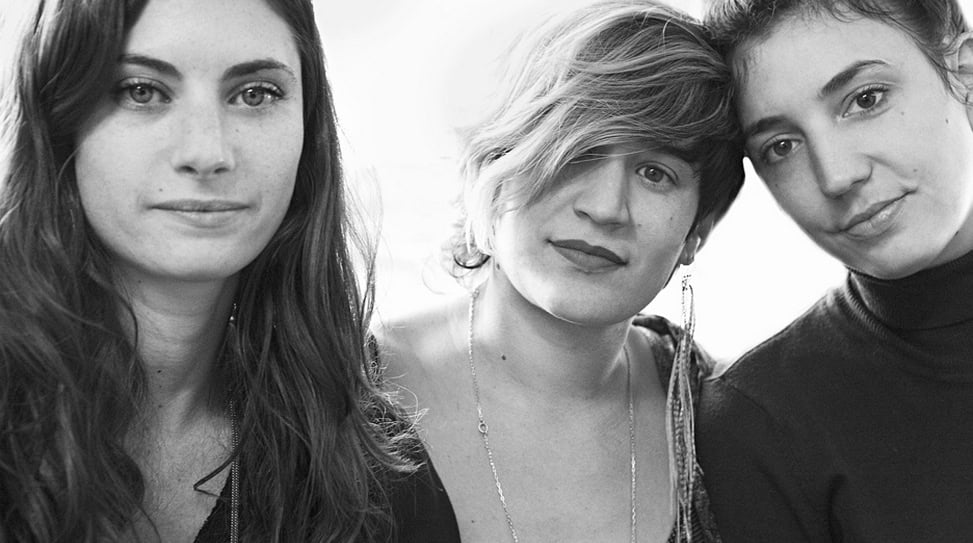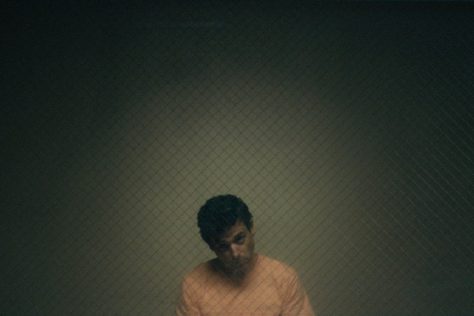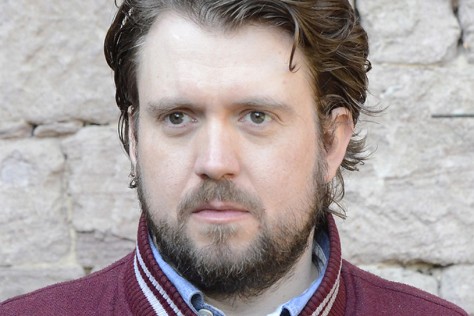Brooklyn’s independent fashion scene seems to be absolutely exploding these days. With the proliferation of “Made in the U.S.A.” initiatives for the sartorially inclined to the sustainable agendas of bespoke garment manufacturers, it’s a burgeoning, inspiring borough to be living and working in right now.
We sat down with Mary Meyer, one of the most prominent womenswear designers to hit the Williamsburg/Greenpoint/Bushwick region, to talk about her new retail operation, the current and forthcoming collections, her collaborative endeavors with companies like BAGGU and Osborn, and, of course, her adolescence and professional beginnings in California, her home State.
Alright, let’s begin at the beginning. You’re from…
California. I grew up in Venice, but I was born in Northern California and went to college in Northern California. So… Venice and the Bay Area.
What was that like? I used to live in L.A.
It was rad. I mean… I enjoyed growing up in California. It was beautiful and relaxing and fun…
Where’d you go to school?
Where’d I go to college? CCAC―California College of Arts and Crafts.
What did you study?
My major was technically Painting, but I ended up doing a lot of different stuff while I was there. One of the things I wound up getting really into was printmaking, and now I’m kind of a print designer, so it still applies to what I do. Sometimes, when I do the prints, I use woodcutting techniques or different skills, so there was a lot to my fine arts training that I use today even though I wasn’t trained as a designer.
So what drew you to clothes?
When I was in school, I did take weaving and dye technique classes, so I was always interested in fiber arts… which I used in paintings and prints. You can still see that―like, all of this [holding up the bleach-dyed scarf she has on] was processed in some way. But, I guess I got out of school and had a little more time on my hands and had all these ideas for things I wanted to wear but didn’t have any money for. I was really particular about what I wanted to wear, so I just started making stuff for myself, and then people would see me in it and wanna buy it. It was all a very organic progression. From there, I started doing trade shows and having an official brand.
In a way, it was like, when I first started, it was very low pressure because I considered myself a painter. That was what I really did, making the clothing thing something I didn’t care about as much. I could put stuff out there, and if people bought it, they bought it; if they didn’t, they didn’t. Then it just turned into something that was really appealing to me because… everyone wears clothes but not everyone collects art or understands art. [Clothing] became something that was more approachable, something that I could talk to my grandparents about. It just worked, so I ended up going in that direction.
So do you identify more with being an artist and printmaker and painter or with being a designer on the fashion side of things?
I’d say both, but I’m definitely working within the world of fashion. I have a studio and a clothing store―this is what I spend my day doing. I still do paintings that then get turned into painting, so I’m able to do both, which is nice.
When was the point when you realized this was a viable route to take and went into clothes more seriously?
I guess it was when I started doing trade shows. That led to getting large orders from stores… and you have to kind of focus in. I love it―it’s fun. [Laughs]
When did you start it?
I think the first official line I put out was in ‘05 or ‘06.
Backing up a little bit, what was the impetus to move out to the East Coast?
I’ve always had family that lived in Manhattan―my dad’s from Manhattan―so I’ve always loved New York and I came here a lot as a kid and a teenager and always sort of assumed I’d live here. When I started getting really involved in fashion, it was really clear that New York was a more relevant place to be than the Bay Area for doing that. I also had a lot of friends who moved here all at once, so it just sort of seemed like the right time.
When was this?
It all happened quickly. I moved here in ‘06.
When did you open this space?
July. We’ve only been here for a few months.
Do you do all of the selecting and buying?
Yeah. It’s all curated by me, but I obviously don’t make all of it. [Laughs]
I really love the store. The jewelry’s really cool… everything’s really cool… and it seems like a lot of it is either locally made or produced by a company based out of New York.
Yeah, not all of it is, but the designer goods are all local. The little [grab and go] stuff―like the $15 sunglasses, which are from L.A. and the Navajo knives, which are from Arizona―are from all over. All the designer jewelry stuff is made by mostly friends of mine.
So are you carrying their stuff to support them or is there more of a selection process involved?
It’s a selection process. I mean, I love to support my friends, and if they make something that I think is sellable, I’m happy to carry it. But the point is to have a curated, shopable selection.
And as for your collection, what’s the process like? Do you work with other people?
Well, I have a really talented team. That’s Emma over there. Her background’s in fashion curation, so she’s a fashion history resource for me and she helps me kind of develop shapes and styles and stuff. And then I have a designer who works once a week, too, and we work together trying to figure out how exactly to make each thing. I definitely have a team of people that help me, but, ultimately, I try to put out a collection of stuff that I would wear and that I think is cool.
I can see that―there’s a lot of cohesion.
Yeah, and there’s an element of having to be on-trend… like, Would you wear these things even though they’re probably going to sell? Every once in a while, I’ll put out a [more obligatory] piece and I’ll just do it, but, mostly, I like to make sure that I would stand behind everything. (Which I suppose is pretty typical… )
Tell me about some of the techniques you use… like the scarf you have on―what’s the story with that?
This particular thing? This is just a spray bleach―we make a mixture of bleach and water, put it in a bottle, spray it in the sun, and let it dry. This [pointing to her shirt] is stone-washed, so it’s done with stones and acid.
So everything’s produced here?
Yeah, we do all the design work here, we do a small amount of production here, and then my real factory is sort of in Sunset Park―that’s who does most of the production. All the printing is done in Greenpoint by the screenprinter… the dye house is around the corner… the stone wash house is around the corner…
Is that a convenience thing or more about the principle of keeping things as local as possible?
To be honest, producing in the United States is extremely difficult, and it’s gotten harder. For instance, the stone wash house that’s around the corner is the only one in New York City. The dye house, too… there’s probably a couple other places, but… even since I’ve lived here―which is only five years―so many places have gone out of business. So, I guess it’s more out of necessity, to use these people. [Laughs]
You just brought up your print stuff and I was wondering where you get the inspiration to do all this geometric stuff―what’s the story behind that stuff?
It’s tough because, a lot of times, I get asked, What’s the inspiration for this? And a lot of times it’s just like, I don’t know! I just liked it! But, [that said], I’m influenced by a conglomeration of different things, the result of which ends up looking like… this. So, like, African art, Japanese dye techniques, geometry and geometric shapes, 80s graphic tees, beach culture, punk flyers―and the conglomeration of all of that sort of makes up my look.
With the print stuff, nothing’s really presented as a graphic, per se―it’s not like you’re just stamping an image on a T-shirt or something.
Right. And we really try to do that, to come up with prints that sort of go all over. I don’t really like to print on hems and stuff, though, and people do still like a print here [pointing to her chest]. This is a flattering place to a have a print, unlike one on [your stomach] because it’s a place that people are generally self-conscious about. That said, yeah, I try to print all over so that it doesn’t just look like a graphic tee, but… in the end, it still kind of is!
What are you working on now?
Well, spring ‘12 is done and that’s being sold to store right now. We’ll start producing that in about a month and a half. What I’m working on right now is… since this is our first year of having the store, we’re currently getting a lot of stuff ready for the holiday season, making sure we have enough product in the store, pushing the gifty items, the grab and go items, and bringing in a couple more brands. We’re doing a little mid-winter collection, which is six styles, all of which are wovens. In a way, because we have a store, we have this platform to test things, so we’re going to release [the wovens] next week and test them out, and based on the response we get, we’ll probably use that as the starting point for the fall ’12 collection. I’ll start working on the fall [2012] collection in December―you have to work about a year out.
It’s crazy how it works like that.
It is. You do get used to it, though.
It’s the same with a magazine or something… you have to work months and months in advance.
Yeah, exactly.
I didn’t even really think about it until you brought it up, but I guess that, by having the store, you get to profit from, like, direct market research.
Yeah, and it’s been very interesting. It’s been a short while, but we’ve been very influenced by [what we’ve seen]. Like, what we sell online is definitely different from what we sell in-store. In-store, it’s a lot about volume and lower-end product; online, it’s higher-end product that people look at over and over and then decide to buy. I’ve been operating the Web store since January of 2009 and it’s been growing, growing, growing and doing really well―it’s ultimately what pushed me to open a retail operation. I expect that, at this point, that online would still be outselling the store, but that’s not the case: in October, we did four times what we did online… which is crazy!
Wow! Congratulations!
It’s really crazy. And it’s just barely begun because this neighborhood is [still developing]. It’s just the tip of the iceberg.
You have a decent number of collaborative products, too… like the Osborn shoe and the BAGGU bags.
Yeah! I mean, the BAGGU, all that physically happened was we bought the bags and then did a process on them; it wasn’t an officially collaboration, though we are selling them as that. Osborn, I just know those guys so it just happened. There’s more collaborations in the works, and most of them are being done with people I know. That’s sort of the fun of knowing a shoe designer or a bag designer.
Right―you can branch out without having you actually make shoes yourself.
That’s right. And everyone gets something out of it.
I really like the Osborn shoes. I actually found out about them through you, at the store!
Oh, cool. They’re a great shoe and they’re definitely having their moment now. The spring collection is just going to be everywhere.
Speaking of shoes, what’s the story with the Shoe Market collaboration?
That is… are you familiar with Shoe Market?
Yeah, the place over on Bedford?
Yeah. So, that’s technically who provides our shoe selection. Again, it’s a collaboration in that I go to shows with them and pick out the styles that will be here. So it’s curated by me, but they are bankrolling it. We split the profits.













 A Conversation with Luke Kirby
A Conversation with Luke Kirby Q&A With Philip Lauer
Q&A With Philip Lauer
No Comments